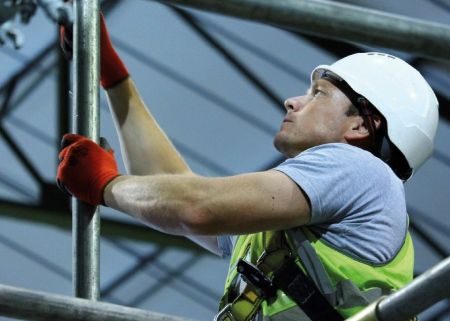Covid-19 and Site Safety: What you Need to Know
Back when PPE just meant hard hats, goggles or ear defenders, site safety for scaffolders was a serious but simple matter. Now though, in the “new normal” we’re all living in thanks to Covid-19, there’s a lot more for scaffold erectors to consider. But with the right knowledge and preparation, it’s possible to create a safe working environment for your team.
Keeping the site safe and hygienic
As always, safety in the scaffold access working environment is paramount. All the usual standards apply, but to protect workers and clients from the risk of coronavirus, there are a few extra measures you’ll need to take.
- Carry out a social distancing risk assessment. You’ll need to plan the sequence of work when constructing and dismantling the scaffold, to ensure that operators can stay far enough apart. Workers should not have to share a scaffold lift or work directly above or below each other, if this brings them closer than 2 metres. If close contact is unavoidable, this should only happen for stretches of 15 minutes or less.
- Provide handwashing facilities. All workers will need to wash their hands at the start and end of a shift, and regularly as they work. Offer hand gel and wipes for extra protection and where it’s not practical to use soap and water.
- Clean the site frequently and thoroughly, paying special attention to surfaces that are touched most often, such as door handles, machinery controls and toilet flushes.
- Where possible ask staff to bring food in from home. In canteens, make sure social distancing can be maintained.
For more detailed recommendations, see the helpful NASC news and resources relating to working on site during the Covid-19 pandemic.
Protecting your workforce
There’s a lot you can do to reduce the risks for site operators:
- Limit the number of people working onsite at any one time. Keep the same gangs of workers together, rather than switching people around. Consider staggered start and finish times.
- Avoid working face-to-face where possible. People facing each other have more risk of passing on the virus than if they’re working side by side.
- Provide PPE or RPE (respiratory protective equipment) where needed. This may not be necessary if you can get the job done while maintaining social distancing.
- Test and trace. Does a member of your crew have coronavirus symptoms? They should immediately isolate and get a test. If they test negative, they can get back to work straight away. But if the test shows that they have Covid-19, everyone they’ve been in close contact with will need to act. They’ll be advised what to do, as per the NHS Test and Trace scheme.
Managing concerns within the team
It’s understandable to have concerns about safety at work. As an employer, you can help by encouraging a two-way conversation.
- Communicate effectively. Make sure all staff are informed of the extra measures you are taking to keep them safe, and are fully briefed about the importance of any new procedures they’ll have to follow.
- Encourage staff to speak up if they have any worries or concerns about working onsite during Covid-19. They may have issues or suggestions that you haven’t considered.
Get in touch
Planning a new scaffolding job? Stock up on all the scaffold equipment you need to ensure your site is safe with Gilray Plant. Call us on 01322 442006 to discuss your requirements



